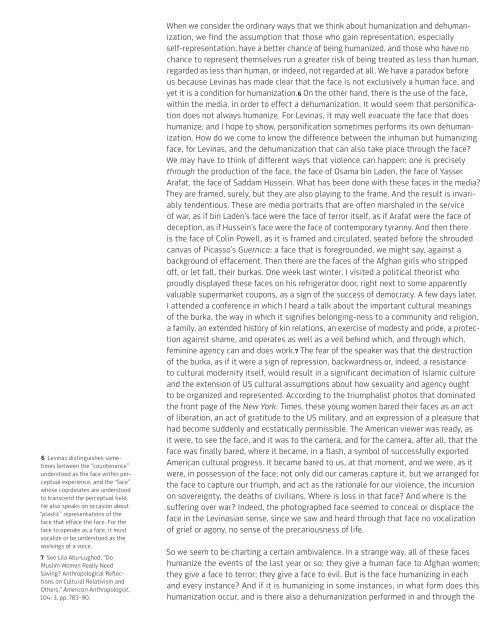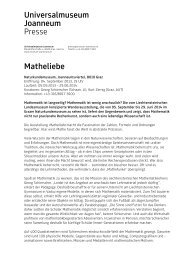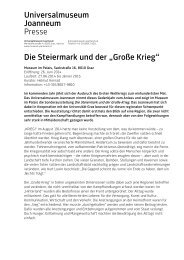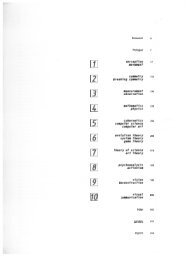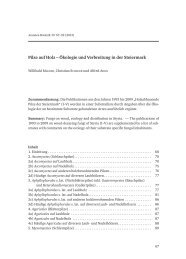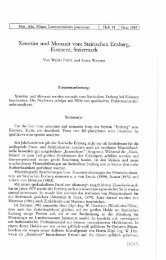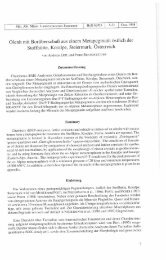Human Condition - Universalmuseum Joanneum
Human Condition - Universalmuseum Joanneum
Human Condition - Universalmuseum Joanneum
Erfolgreiche ePaper selbst erstellen
Machen Sie aus Ihren PDF Publikationen ein blätterbares Flipbook mit unserer einzigartigen Google optimierten e-Paper Software.
6 Levinas distinguishes sometimes<br />
between the “countenance”<br />
understood as the face within perceptual<br />
experience, and the “face”<br />
whose coordinates are understood<br />
to transcend the perceptual field.<br />
He also speaks on occasion about<br />
“plastic” representations of the<br />
face that efface the face. For the<br />
face to operate as a face, it must<br />
vocalize or be understood as the<br />
workings of a voice.<br />
7 See Lila Abu-Lughod, “Do<br />
Muslim Women Really Need<br />
Saving? Anthropological Reflections<br />
on Cultural Relativism and<br />
Others,” American Anthropologist,<br />
104: 3, pp. 783–90.<br />
When we consider the ordinary ways that we think about human ization and dehumanization,<br />
we find the assumption that those who gain representation, especially<br />
self-representation, have a better chance of being humanized, and those who have no<br />
chance to represent themselves run a greater risk of being treated as less than human,<br />
regarded as less than human, or indeed, not regarded at all. We have a paradox before<br />
us because Levinas has made clear that the face is not exclusively a human face, and<br />
yet it is a condition for humanization.6 On the other hand, there is the use of the face,<br />
within the media, in order to effect a dehumanization. It would seem that personification<br />
does not always humanize. For Levinas, it may well evacuate the face that does<br />
humanize; and I hope to show, personification sometimes performs its own dehumanization.<br />
How do we come to know the difference between the inhuman but humanizing<br />
face, for Levinas, and the dehumanization that can also take place through the face?<br />
We may have to think of different ways that violence can happen: one is precisely<br />
through the production of the face, the face of Osama bin Laden, the face of Yasser<br />
Arafat, the face of Saddam Hussein. What has been done with these faces in the media?<br />
They are framed, surely, but they are also playing to the frame. And the result is invariably<br />
tendentious. These are media portraits that are often mar shaled in the service<br />
of war, as if bin Laden’s face were the face of terror itself, as if Arafat were the face of<br />
deception, as if Hussein’s face were the face of contemporary tyranny. And then there<br />
is the face of Colin Powell, as it is framed and circulated, seated before the shrouded<br />
canvas of Picasso’s Guernica: a face that is foregrounded, we might say, against a<br />
background of effacement. Then there are the faces of the Afghan girls who stripped<br />
off, or let fall, their burkas. One week last winter, I visited a political theorist who<br />
proudly displayed these faces on his refrigerator door, right next to some apparently<br />
valuable supermarket coupons, as a sign of the success of democracy. A few days later,<br />
I attended a conference in which I heard a talk about the important cultural meanings<br />
of the burka, the way in which it signifies belonging-ness to a community and religion,<br />
a family, an extended history of kin relations, an exercise of modesty and pride, a protection<br />
against shame, and operates as well as a veil behind which, and through which,<br />
feminine agency can and does work.7 The fear of the speaker was that the destruction<br />
of the burka, as if it were a sign of repression, backwardness or, indeed, a resistance<br />
to cultural modernity itself, would result in a significant decimation of Islamic culture<br />
and the extension of US cultural assumptions about how sexuality and agency ought<br />
to be organized and represented. According to the triumphalist photos that dominated<br />
the front page of the New York: Times, these young women bared their faces as an act<br />
of liberation, an act of grat itude to the US military, and an expression of a pleasure that<br />
had become suddenly and ecstatically permissible. The American viewer was ready, as<br />
it were, to see the face, and it was to the camera, and for the camera, after all, that the<br />
face was finally bared, where it became, in a flash, a symbol of successfully exported<br />
American cultural prog ress. It became bared to us, at that moment, and we were, as it<br />
were, in possession of the face; not only did our cameras capture it, but we arranged for<br />
the face to capture our triumph, and act as the rationale for our violence, the incursion<br />
on sovereignty, the deaths of civilians. Where is loss in that face? And where is the<br />
suffering over war? Indeed, the photographed face seemed to conceal or displace the<br />
face in the Levinasian sense, since we saw and heard through that face no vocalization<br />
of grief or agony, no sense of the precariousness of life.<br />
So we seem to be charting a certain ambivalence. In a strange way, all of these faces<br />
humanize the events of the last year or so; they give a human face to Afghan women;<br />
they give a face to terror; they give a face to evil. But is the face humanizing in each<br />
and every instance? And if it is humanizing in some instances, in what form does this<br />
humanization occur, and is there also a dehumanization performed in and through the


